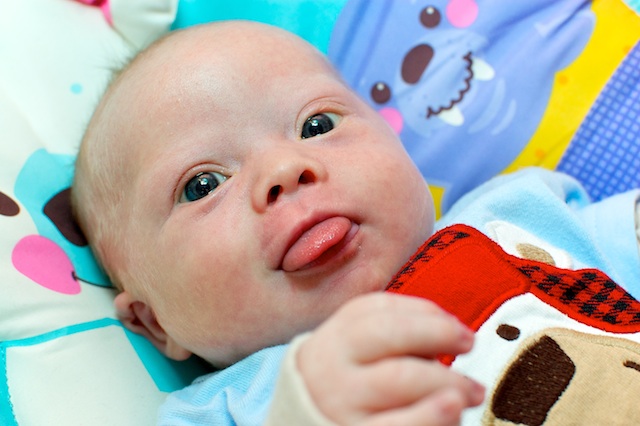
There is nucleus in every cell of our human body which carries valuable genetic material which is stored in our genes. Genes carry all our inherited characters and they are grouped along the rod like structures called chromosome . The nucleus usually contains 23 pairs of chromosomes . Down syndrome in a child occurs when there is partial or full extra copy of chromosome 21
The additional chromosome alters the development and forms the characteristics of down syndrome. Some of the common characteristics of down syndrome are low muscle tone, small stature, an upward slant to the eyes, and a single deep crease across the center of the palm etc.
What are the types of down syndrome?
There are three types of down syndrome namely
- Trisomy 21
- Translocation
- Mosacism
Trisomy 21 (nondisjunction):
Down syndrome is usually caused by an error in cell division called "nondisjunction". Nondisjunction results in an embryo with three copies of chromosome 21 instead of the usual two. Prior to or at conception, a pair of 21st chromosomes in either the sperm or the egg fails to separate. As the embryo develops, the extra chromosome is replicated in every cell of the body. This type of Down syndrome, which accounts for 95% of cases, is called trisomy 21.
Mosaicism
Mosaicism (or mosaic Down syndrome) is diagnosed when there is a mixture of two types of cells, some containing the usual 46 chromosomes and some containing 47. Those cells with 47 chromosomes contain an extra chromosome 21.
Mosaicism is the least common form of Down syndrome and accounts for only about 1% of all cases of Down syndrome. Research has indicated that individuals with mosaic Down syndrome may have fewer characteristics of Down syndrome than those with other types of Down syndrome. However, broad generalizations are not possible due to the wide range of abilities people with Down syndrome possess.
Translocation
In translocation, which accounts for about 4% of cases of Down syndrome, the total number of chromosomes in the cells remains 46; however, an additional full or partial copy of chromosome 21 attaches to another chromosome, usually chromosome 14. The presence of the extra full or partial chromosome 21 causes the characteristics of Down syndrome.
What causes down syndrome?
The extra single or extra pair of chromosome 21 causes down syndrome. But until now we don't know what forms the extra chromosome. The only factor now we are able to link is age factor of women giving birth to child. Maternal age is the only factor that has been linked to an increased chance of having a baby with Down syndrome resulting from nondisjunction or mosaicism.
The additional partial or full copy of the 21st chromosome which causes Down syndrome can originate from either the father or the mother. Approximately 5% of the cases have been traced to the father.
Does down syndrome is hereditary ?
No, only 1% of down syndrome cases has hereditary component.
Diagnosis of Down Syndrome?
The down syndrome cam be diagnosed in two stages they are
- Prenatal
- After Birth
Prenatal:
Physicians have a variety of prenatal screening tests available to predict the likelihood of the presence of Down syndrome.
After birth:
The child tested positive for down syndrome should be raised with proper care, medication and nurture to lead a comfortable life.
World Down Syndrome Day 2016
The World down Syndrome is observed on every March 21 to create awareness and support for down syndrome affected. This year World Down Syndrome Day 2016 is celebrated with the theme #MyfriendsMycommunity to state that we should treat all down syndrome affected as our friend and our community.
Post Your Comments for this Article
Related News
-
1.5 million jobs in rural India within one year
2017-06-16 11:45:48
-
Mumbai University offers new courses
2017-06-16 10:58:44
-
Mega Education Conclave In Srinagar
2017-05-22 09:53:23
-
Tamil Nadu SSLC Results 2017
2017-05-19 10:11:46



